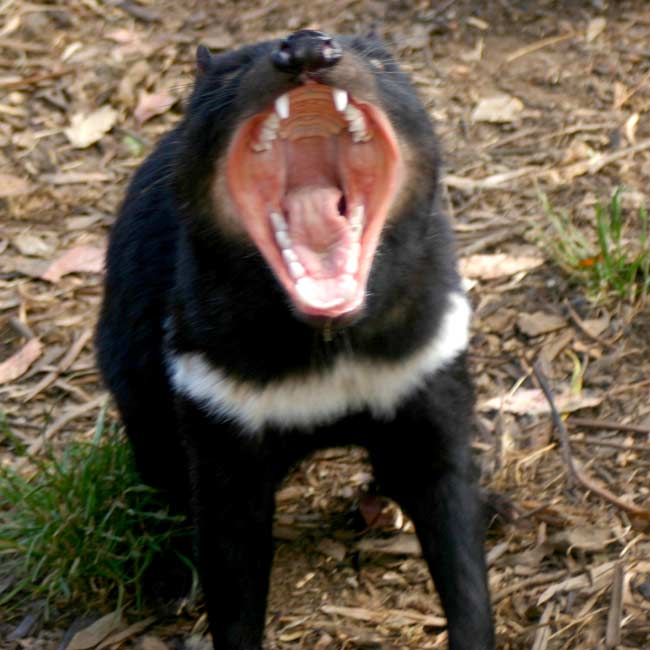Tasmanian Devils Fight Cancer with Sex

Tasmanian devils have for some years been plagued with a mysterious and lethal cancer. Now, the dog-sized mammals are fighting back: They are breeding at younger ages. Devils are furry marsupials, mammals that have no true placentas — females usually have pouches to carry and suckle newborns. They reside only on the island of Tasmania, though fossil evidence suggests that long ago Tasmanian devils (Sarcophilus harrisii) were spread across the Australian mainland. Devils are known for their offensive odor, disturbing screeches and viciousness when they eat, mostly carrion.
Hunters considered the devils pests to livestock and took a toll on the population in the mid-1800s. Now the devil facial tumor disease is killing the animals within a year of reaching maturity. The infectious cancer is spread directly through biting. The tumors mainly affect adults at least 2 years old, causing death within months. Menna Jones of the University of Tasmania and colleagues examined data collected before and after the arrival of the disease from five Tasmanian devil populations on the island. A much higher proportion of older adults, over the age of 3, were present in the populations before the disease appeared. After disease emergence, precocial breeding by 1-year-old females increased dramatically at four sites, increasing from between zero and 12.5 percent beforehand to between 13 percent and 83 percent after. The range in percentages reflects the different findings at each of the sites on the island. Reduced population density and reduced competition for food could be behind any growth spurts that would allow juveniles to reproduce before their time, the researchers suggest. Symptoms of the disease, including cancerous lesions around the mouth, face and neck, were first reported in 1996 at one spot on Tasmania. By 2007, the disease had spread over more than half of the devils' home range there. Some populations have lost up to 89 percent of their members as a result of the facial tumors. The newly discovered precocial breeding could help to keep the species from vanishing, the researchers speculate. The study, reported this week in the journal Proceedings of the National Academy of Sciences, was funded by the Australian Research Council, the Australian National University Faculties Research Grants Scheme, and the Tasmanian Government Save the Tasmanian Devil Program.
- Video: Dancing Wild Bears
- Polygamous Animals: No Stinking Rules
- Top 10 Deadliest Animals
Get the world’s most fascinating discoveries delivered straight to your inbox.
Jeanna Bryner is managing editor of Scientific American. Previously she was editor in chief of Live Science and, prior to that, an editor at Scholastic's Science World magazine. Bryner has an English degree from Salisbury University, a master's degree in biogeochemistry and environmental sciences from the University of Maryland and a graduate science journalism degree from New York University. She has worked as a biologist in Florida, where she monitored wetlands and did field surveys for endangered species, including the gorgeous Florida Scrub Jay. She also received an ocean sciences journalism fellowship from the Woods Hole Oceanographic Institution. She is a firm believer that science is for everyone and that just about everything can be viewed through the lens of science.


